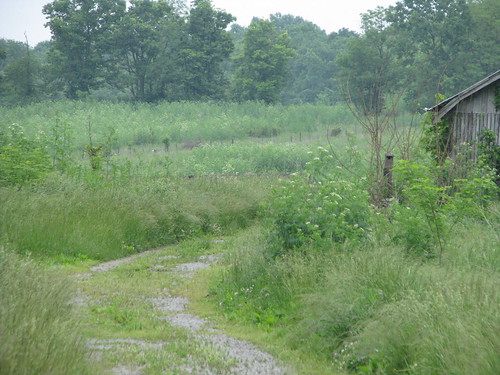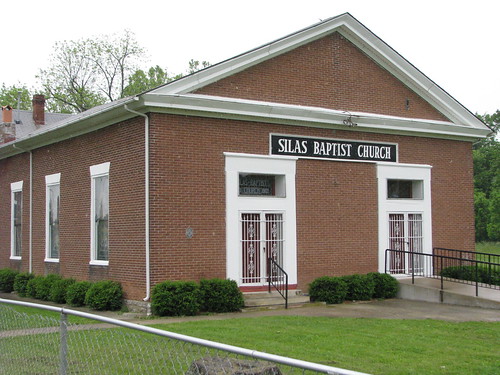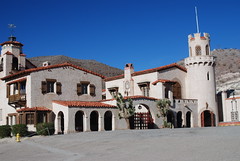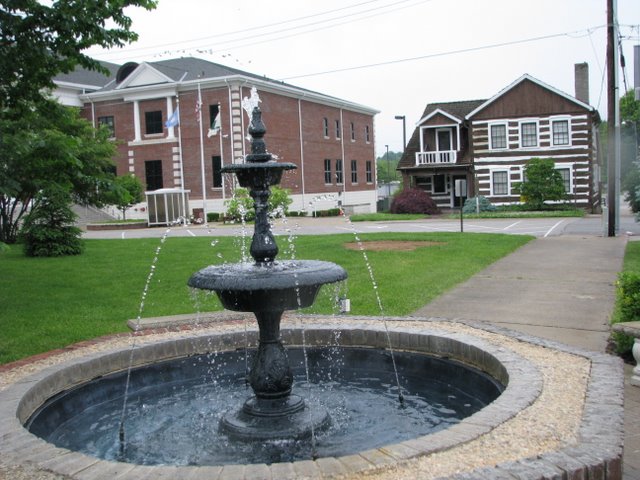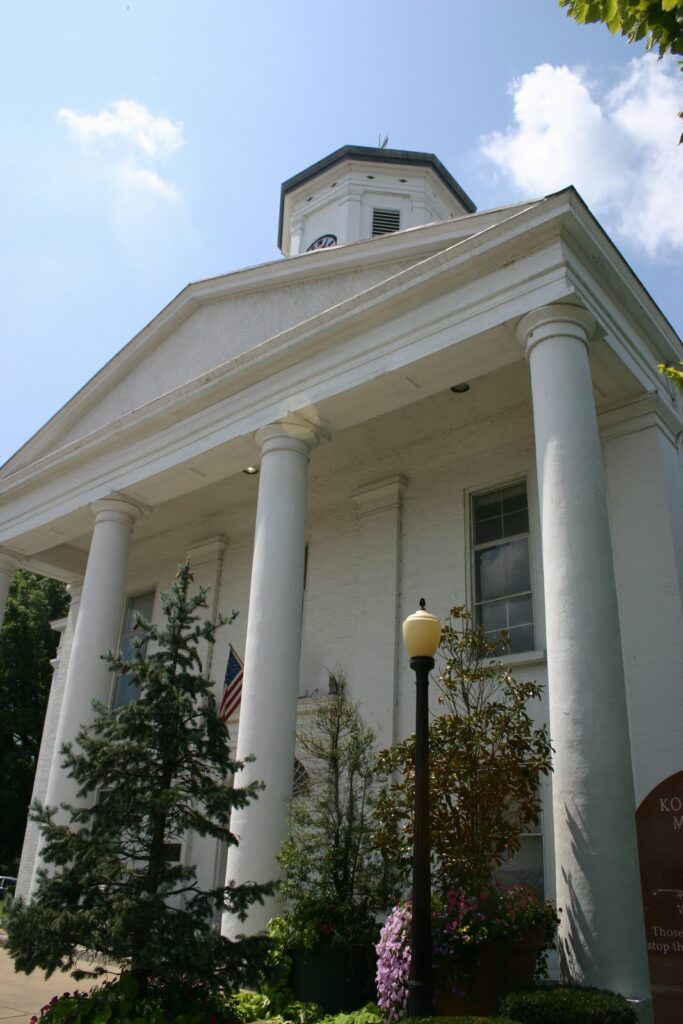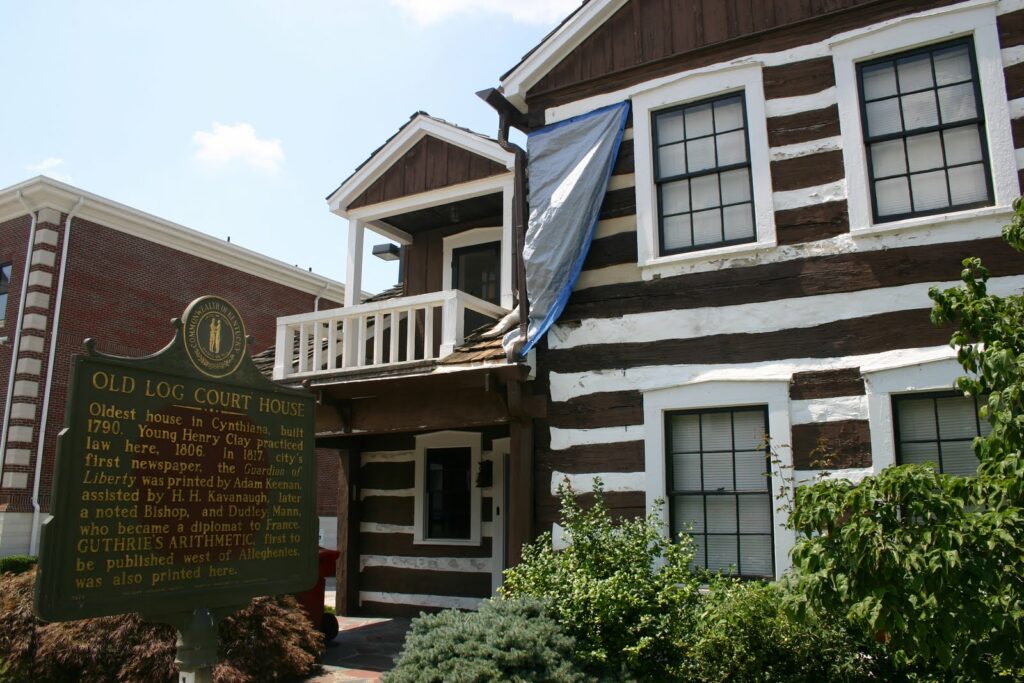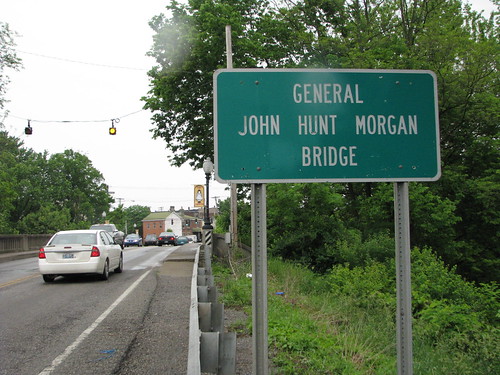 |
| John Hunt Morgan Bridge, Cynthiana, Ky. |
General John Hunt Morgan, the Thunderbolt of the Confederacy, is a favorite Civil War general among many Kentuckians. In Lexington, the statute of him upon his steed is the only one in Kentucky with a mounted Civil War soldier or officer.
In Cynthiana, site of two Civil War battles (both involved JHM), a bridge “honor[s] famous Confederate calvary leader.” Opened to traffic on October 8, 1949, the General John Hunt Morgan Bridge was dedicated in 1950. It replaced a wooden, covered bridge which had been erected in 1837. Closed in 1944 and the flooring and sides removed, daring teenagers attempted to cross the skeletal remains of the covered bridge in 1946. Four drowned. In December 1948, that bridge was pushed into the river and construction began on the present bridge. [*] [*]
The bridge crosses the south fork of the Licking River.

